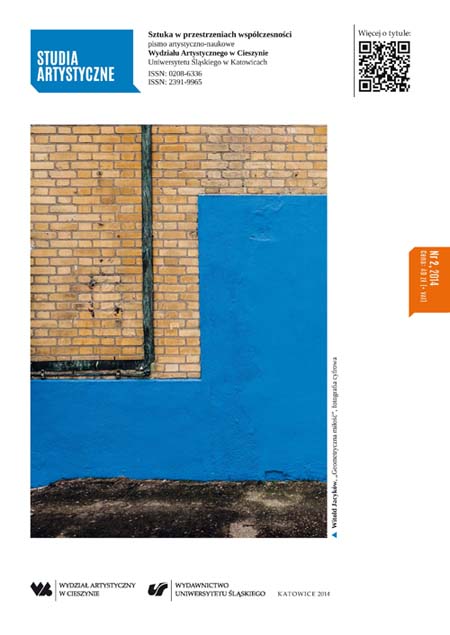Co zrobić z innością Michaela Willmanna?
What to Do with the Otherness of Michael Willmann?
Author(s): Ireneusz BotorSubject(s): Fine Arts / Performing Arts
Published by: Wydawnictwo Uniwersytetu Śląskiego
Keywords: otherness; mysticism; cultural identity; transformation
Summary/Abstract: Let us not wait till we are offered something we can make use of. Rather, let us ponder what is it that we are able to call our achievements. This simple and universal thought is reflected in culture. We can endow others with what they lack. This completely different quality that we reach for, can turn into our inspiration, or part of our cultural identity. Globalization makes us seek for otherness that can later transmute into identity badges, or to put it otherwise, components of cultural identity. The achievements of the Baroque painter Michael Willmann can be interpreted within the frames of otherness. His otherness becomes conspicuous when we become aware that it was determined culturally and spiritually – aligned with mysticism in Silesia, where he was active. Some of his pieces of art depict places labeled as postindustrial areas. Can his pieces of art, shaped in such conditions, be regarded as part of cultural identity? This question emerged over the years of the author’s research, and its outcome, which is a broad research project published by Wrocław University. There Willmann appears to have been considered one of the most renowned art phenomena of the time in Central Europe. However, a certain disparity is depicted in this opinion and the presence of this artist in minds of his contemporaries, especially on postindustrial lands. Former studies in Polish art refer to their characteristics which cannot contain his art. The otherness of Willmann – when transmixed – can be included in general oeuvre. In the frames of postindustrial lands, it can certainly enrich its cultural image by introducing quality of highest order into the landscape often associated with porous and rough industrial forms as well as with nonprofessional culture. Undoubtedly, his achievements can be viewed as worth and enriching. Furthermore, by its transformations in modern art Willmann’s oeuvre can introduce qualities of different order that lay behind. This was done by artists from Krakow; however, the issue of building cultural identity while remaining open to this element is still valid.
Journal: Studia Artystyczne
- Issue Year: 2014
- Issue No: 2
- Page Range: 23-29
- Page Count: 7
- Language: Polish

